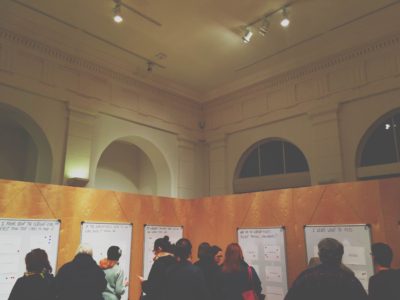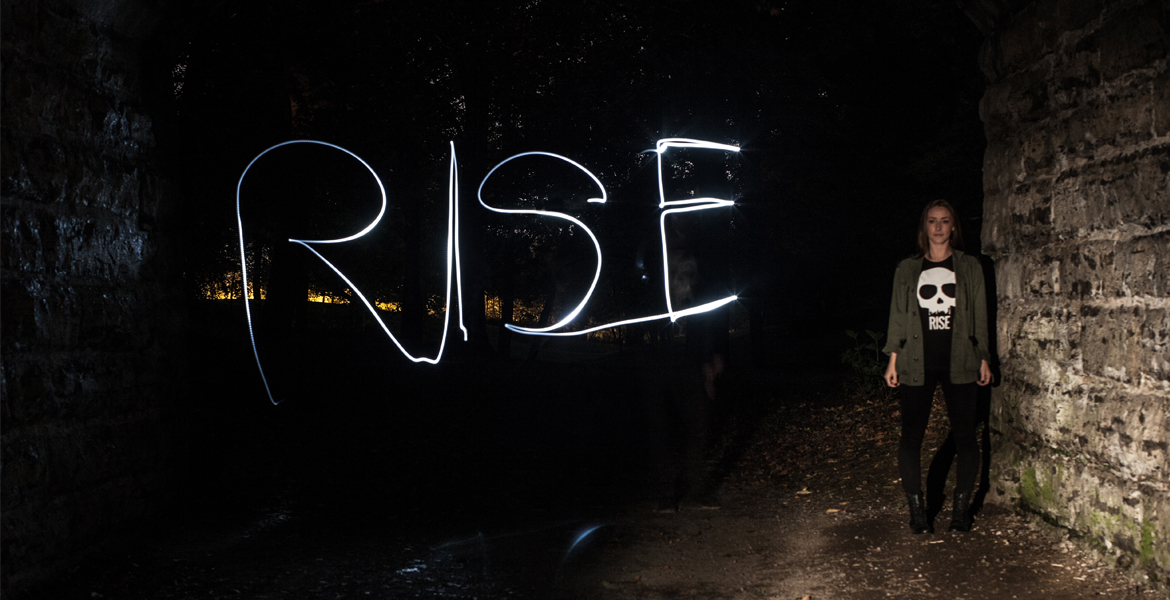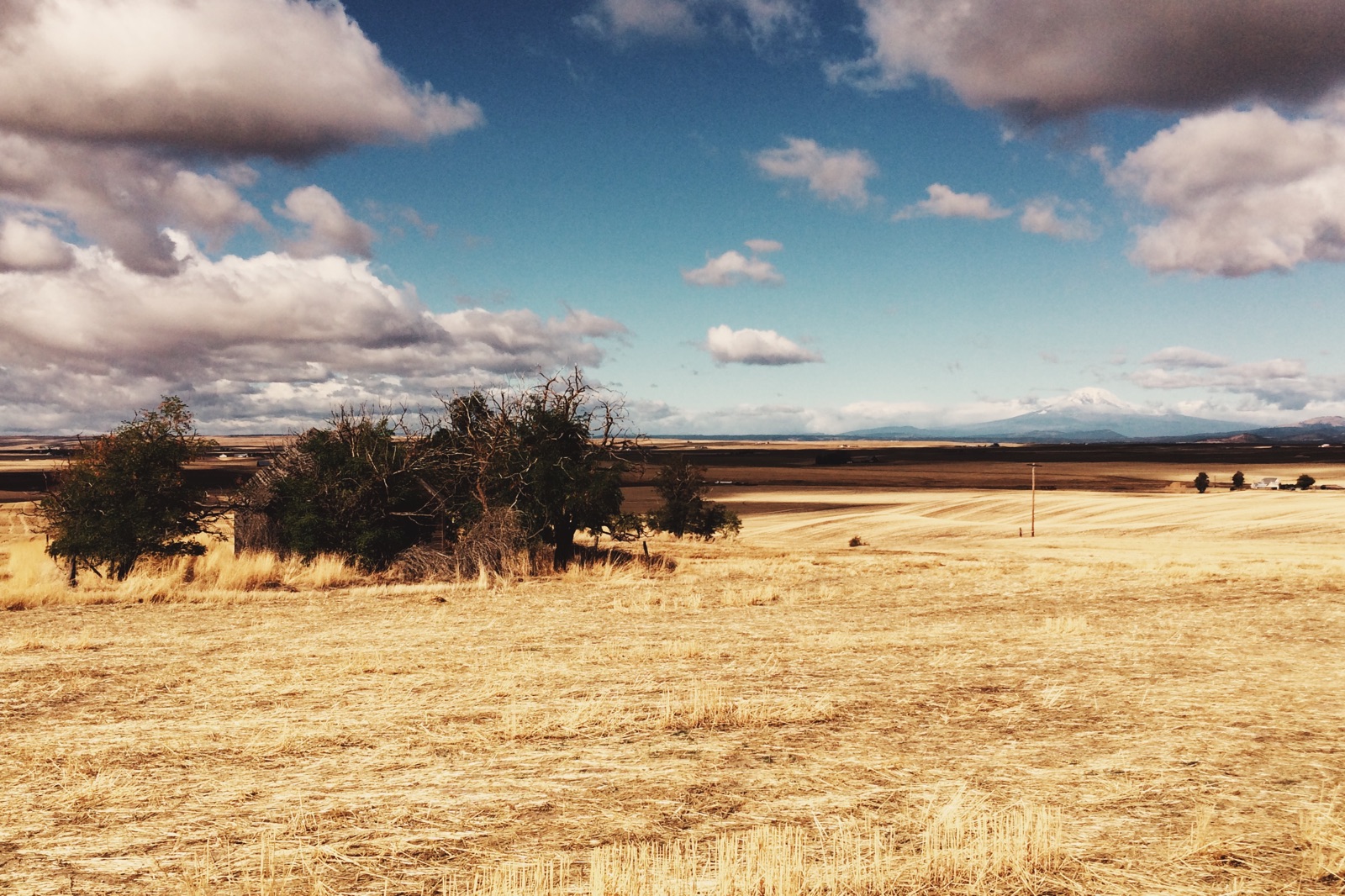Growth. Development. Evolution.
When you speak of Buffalo in 2015, these words are once again part of the vernacular. While many of us see these ideas as symbols of new businesses and attractions, there are those that recognize the need to incorporate these notions into the city’s beloved fixtures.
Over the past few months, the Albright Knox Art Gallery has hosted a series of meetings seeking public input from members and non-members alike. Monday, January 12, was the fifth and final meeting of the series exploring the conceptual evolution for the gallery while potentially solving several lingering issues.
So I swung by Clifton Hall Monday night. Here’s what went down.
Director Janne Sirén and other staff members began the conversation with a look back into the museum’s history. Stemming from the original construction in 1905, to the surge in acquired works following World War II, to the completion of the Gordon Bunshaft addition in the 1960s. These observations set the stage for the evening’s main focus, the Albright Knox Art Gallery’s functionality in 2015, and its plan for the future.
What I admired most about Dr. Sirén’s dialogue was his candor and recognition of mistakes made in the institution’s past. Most notably, Sirén identified the closing of the Hoyt Lake entrance upon completion of the Bunshaft addition. Think about all the misinformed out-of-towners, through no fault of their own, that traverse those beautiful stairs only to find out the main entrance is on the other side of the building. Another mistake identified was the lack of “prime” space within that portion of the layout. While the AK facility technically possesses around 40,000 square feet of space, it is limited to roughly 19,000 square feet of “prime” space. Prime space defines an area that accommodates not only the artwork itself, but allows the patron a generous amount of distance in which to view that artwork. While this is not an issue within the 1905 building, anyone who has traversed the Bunshaft ‘loop’ can attest to the somewhat cramped corridors. Aside from the dilemma this inadequate space poses for guests of the AK, it also reveals negative implications for the display of the gallery’s finer pieces. Sirén recalled an incident in the Bunshaft corridors that resulted in a guest stumbling into one of the museum’s definitive acquisitions, thankfully without irreparable damage. The AK’s acquired pieces, comprised of around 6,500 works including Picasso, Gorky, Monet, Pollock, and Frida Kahlo, is heralded as a “top 20” collection, worldwide. However, because of the limited space, the general public rarely sees the majority of these items.
Growth of the facility can also lend a hand in the day-to-day operation of the gallery. Dr. Sirén cited his own “embarrassment” that guests arriving from around the world are greeted by a pop-up tent near the Hoyt Lake staircase, constructed as a makeshift kitchen during events, that blocks the architecturally magnificent facade of the 1905 building. Additionally, being recognized as an upper echelon gallery, the AK has stringent rules it needs to abide by in order to house some of the greatest works of art. These strict rules even mandate specific temperature and humidity levels that the artwork must reside in. For example, something seemingly as insignificant as the lack of a loading dock on-site can hinder the reputation of the gallery. As is protocol at AK, without a dock, artwork is craned into the building’s maintenance area, whether it is hot, cold, raining, windy, snowing, and risks severe damage to the artwork at a molecular level.
Following Dr. Sirén’s presentation we were asked to rank our preferences on a number of topics, ranging from what first comes to mind when we think of the AK, what we think the biggest challenges of the AK are, and what we would like to see more of at the gallery. Observing and chatting with a few of the guests, a couple things are apparent. First and foremost, there is a high desire to build upon the gallery’s top-tier reputation by increasing prime space; displaying the hidden jewels laying in storage. Second, there is quite a bit of support for the community driven public arts programs, such as ‘Shark Girl’ and the summer jazz series. During the warmer months these events draw enormous crowds, utilizing the exterior space, allowing for the architecture to be its own artistic backdrop. What the minds at AK need to do is find harmony between adding additional space at the Elmwood Avenue site, without sacrificing the remnants of the Olmsted Park system surrounding the campus.
Sirén and his team will now compile the public feedback, combine it with their own expertise, and balance their plans with the realities they face in their location and funding to formulate a tangible architectural plan for the future.
If you weren’t able to make any of the five public meetings, but want to provide your own opinions and feelings for the expansion of the AK campus, please email info@albrightknox.org.
– Drew





